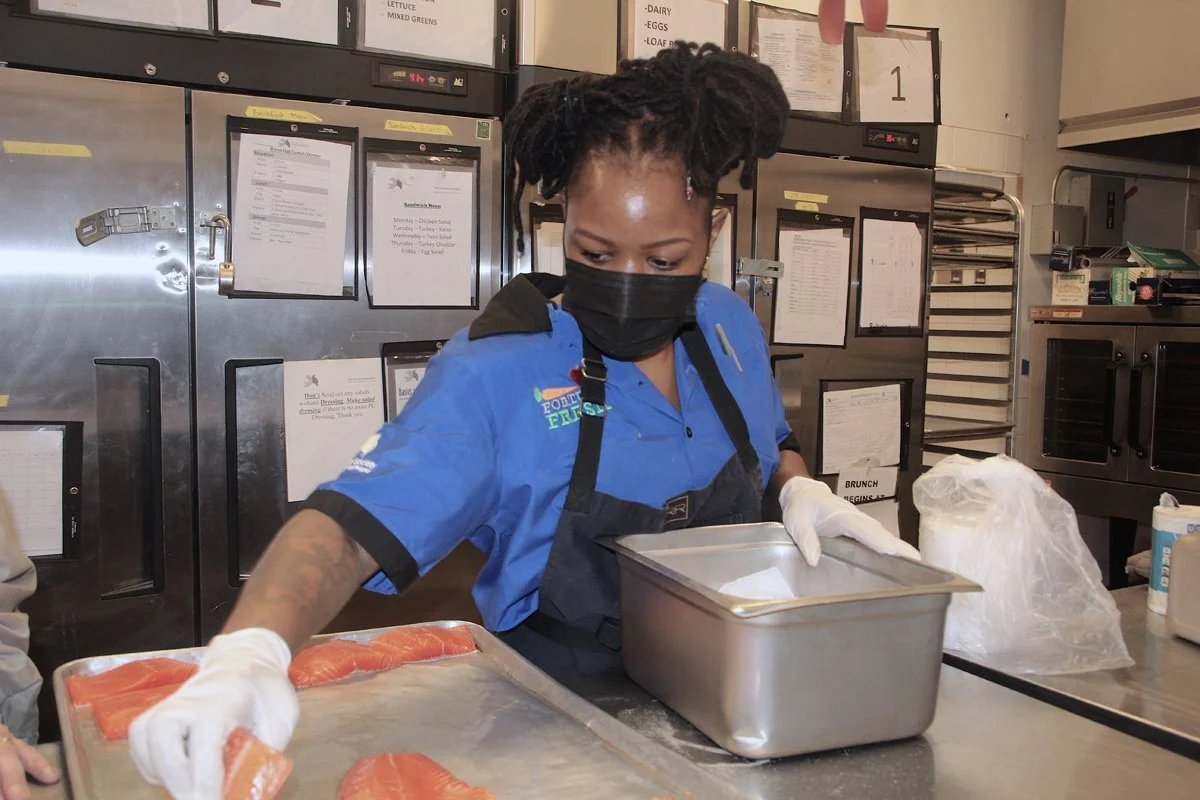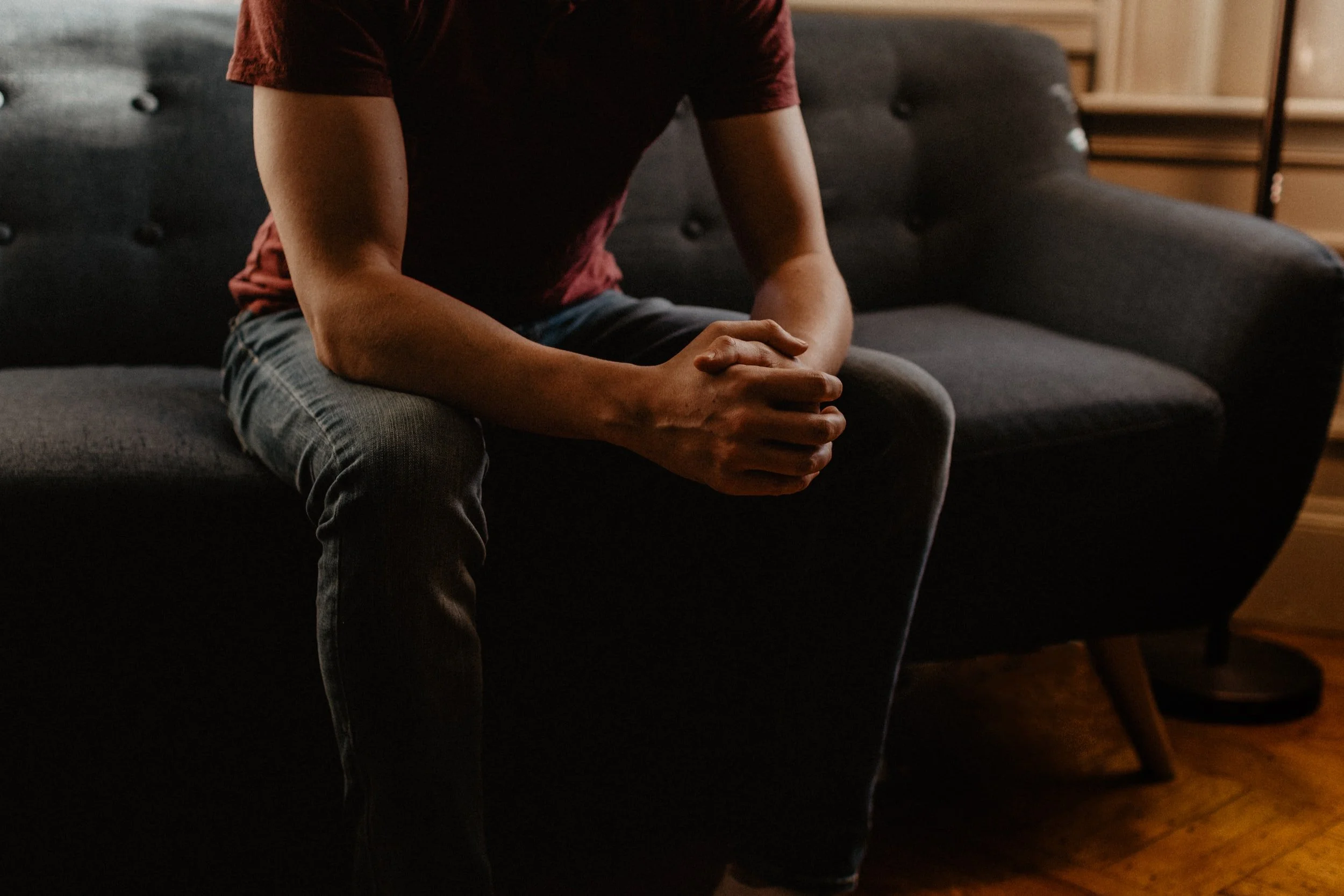Healing Past the Trauma
In October of 2020 I sat in on a Zoom call with a group of formerly incarcerated men brainstorming the causes of escalating gun violence in Philadelphia. They gave me a slew of one-word responses.
Poverty. Hopelessness. Self-hate. Inadequacy. Misguidance. Trauma. Toxic Masculinity. Inequity.
The meeting was part of an intergenerational healing circle for formerly incarcerated men from ages 17 to 50. The older men in the group were former Juvenile Lifers, all of them convicted for acts of homicide for which they served around 30 years. The young people were recently released from sentences where they were tried as adults when they were minors for serious violent offenses.
All of the men are trying to figure out their place in the world post-incarceration. The hope was to support them in achieving their self-determined vision of wellness, through connections to community resources and opportunities. In short, a future that doesn’t include violence.
The program was created as part of a $100,000 grant that the Philadelphia Youth Sentencing & Reentry Project (YSRP) received from Impact100 to advance their reentry program that partners with young people and former Juvenile Lifers who faced charges in adult court as children. They launched the year-long program in person shortly before the pandemic, and then transitioned to Zoom.
“We compare it to the barbershop model,” says Juwan Bennett, a reentry coordinator for the Youth Sentencing & Reentry Project and one of the facilitators of the group. “If you’ve ever been to a Black barbershop it’s intergenerational, everybody’s on equal footing. Same as our group. Everybody has a perspective and can join in the conversation and we laugh together. We experience raw emotions together and we keep it honest with each other. What happens with the intergenerational healing circle is that it’s intentional. We’re intentionally building community and intentionally creating space.”
Each session feels a little like group therapy on steroids. Yes, the men talk about emotions in ways they probably can’t in other parts of their lives, but they also talk about practical things—finding work, maintaining healthy relationships, looking for a place to live. But most importantly they are able to talk to someone else who has experienced the things they experienced in the prison system.
“There’s really no space for individuals who’ve committed a serious harm to really talk about their actions with other people who’ve been through those experiences,” Bennett says, in part because they can be sent back to prison for violating their parole by associating with other formerly incarcerated people.
“Having a space where people can now talk about this could be a model for the criminal justice system to look into,” Bennett says. “We know that the prison experience can be traumatic, but we don’t have any spaces where people who’ve been through a traumatic experience or have done harm, can get together and process those feelings and then become whole, and then be able to help provide solutions for stakeholders to address issues in our community.”
Dr. Harold Jean Wright, a clinical and forensic psychologist who has been focusing on behavioral health in Philadelphia for two decades, was another moderator of the group. Wright says the group dynamics and open conversation gave the men purpose and a feeling of belonging that is necessary to re-integrating into society post-incarceration.
“There’s something about knowing that you have something to contribute in the world that is a great elixir,” Wright says. “When you give them an opportunity to see life from the point of view of: I have value, I have worth, I have an ability to impact someone else’s life in a positive way. Then you start to see the light bulb go off and people really get into that service aspect of being useful and seeing themselves as valuable.”
We live in a city that has been searching for solutions to the gun violence epidemic that has been raging since 2020, and that is still on the rise: Already more than 300 people have been killed and another 1,200 shot this year, a nearly 25 percent increase over last year’s brutality. I worked on an entire podcast, Philly Under Fire, looking for solutions. During a year of reporting I didn’t find any clear cut answers. What I did find were a lot of community-based groups doing a lot of great work that can help chip away at the problem.
It’s no secret that trauma and inequity often lead to increased levels of aggression and gun violence, particularly early exposure to violence in families and neighborhoods of color, where young Black men are the most frequent victims and perpetrators of shootings. The healing circle was created to try to address some of that trauma, to help the young men move away from their violent past.
Joanna Visser Adjoian, the co-founder of YSRP, says that the healing circle was born out of conversations with older men who had been in the system who were looking to connect with the next generation. “Former Juvenile Lifers were seeking opportunities to share their experiences with young people, to inspire their own transformation and healing,” she says. “The formation of intergenerational circles, where people with shared experience across generations can come together and heal, was a natural outgrowth of that desire.”
The Intergenerational Healing Circle, which is supported by local and international foundation partners, as well as gifts from individuals, had four core goals: understanding and healing from trauma; creating connectedness rooted in shared experience of incarceration and reentry; developing agency and liberation-oriented leadership; and community building.
“You might not know the history of conflict in a neighborhood, but one of the older guys does,” Bennett says. “And the older guys might not understand how the younger guys get into arguments today. If we’re able to kind of pull those intergenerational conversations and threads together, then we can make real, real, real, real change.”
While reporting Philly Under Fire I joined the healing circle for a number of Zoom sessions. I even met them in person in West Philly for a socially-distanced picnic.
I remember very clearly one conversation we had about getting out of prison and wanting to eat every meal with a spoon because that was the only utensil they were given during most meals, how there was so much shame wrapped up in that.
We talked about how hard it was to answer the simple question how are you feeling? because no one had asked them that for so long. They talked about the fear of trying something new because it felt like failure in any aspect of their lives was no longer an option for them.
The older men gave the younger men leads on jobs; the younger guys taught the older ones how to get on social media. The men’s vulnerability was infectious and heartbreaking and it was so clear that they were eager to have a space where they could digest their trauma.
“It’s this relatedness and willingness to be vulnerable in the IGHC that makes this experience rewarding and transformative for many of us,” says John Pace, the other Reentry Coordinator at the Youth Sentencing & Reentry Project. “While in prison, we often had to suppress our vulnerabilities and exacerbate our masculinity, so this space for us is truly healing.”
Over the course of our conversations and while watching the young men interact with their elders, the ones they affectionately called the old heads, I felt in my gut that something was changing in front of my eyes, that maybe offering this kind of community and therapy to the formerly incarcerated will help heal their trauma and keep them from picking up a gun or getting back into the illegal economy.
YSRP has measured success based on whether the men in the group felt connected to one another, felt a a sense of healing and a sense of empowerment and purpose.
“Given 2020’s context of global pandemic, ongoing state violence against Black lives, uprising, and racial reckoning, building an intergenerational community of individuals with lived experiences of incarceration has become critically important,” Visser Adjoian says “IGHC participants self-reported the value they found in attending the group, and have forged meaningful relationships within it that have been crucial as they navigate their reentry.”.
In May 2021, YSRP launched two new IGHC cohorts. One follows the format of their 2020 pilot, bringing together young Black and brown men (youth client-partners of YSRP) and former Juvenile Lifers who share the experience of being prosecuted in the adult justice system as children in facilitated group sessions that explore issues of trauma, incarceration, healing and growth.
The second cohort is exclusively for women and girls. They told me they anticipate deepening the healing circles as a core component of YSRP’s work moving forward.
“It’s this relatedness and willingness to be vulnerable that makes this experience rewarding and transformative for many of us,” says John Pace. “While in prison, we often had to suppress our vulnerabilities and exacerbate our masculinity, so this space for us is truly healing.”
“We’re still not a finished product. I think as much as we’re still in our infancy stages,” Bennett says. But one of the big things that he took away from facilitating the group is that solutions to gun violence do lie in conversations between the generations.
“You might not know the history of conflict in a neighborhood, but one of the older guys does,” he says. “And the older guys might not understand how the younger guys get into arguments today. If we’re able to kind of pull those intergenerational conversations and threads together, then we can make real, real, real, real change.”
At the end of one of the Zoom meetings that I joined we asked for some more one-word answers from the men about gun violence. This time I wanted to know what they thought could end the epidemic of gun violence in our city. The men hesitated slightly, but then the words began pouring out of them.
Education. Money. Humility. Cultural change. Choices. Love.






